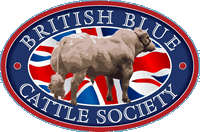BVD and Pedigree Suckler Herds
18th April 2016
Pedigree breeders who buy, sell or show cattle are aware of the importance of knowing their herd is free from disease and protected against potential infection.
Of the many infectious diseases that affect cattle, BVD is in the spotlight; compulsory eradication schemes are in place in Scotland, Northern Ireland and the Republic of Ireland, and national voluntary schemes are likely to begin in England and Wales in the near future.
Why choose to eradicate BVD over other infectious diseases?
There are several reasons to choose to eradicate BVD:
-
Firstly, it’s relatively easy to identify and remove Persistently Infected (PI) cattle, which are the main source of BVD infection.
-
Secondly, BVD suppresses the immune system making cattle more susceptible to other disease, so by eradicating BVD, other diseases become easier to control.
-
Thirdly, BVD has a serious financial impact. Research has shown a 5-fold return on investment of eradicating BVD from suckler herds; much of this is due to improvements in herd fertility and calf health.
What should I do about BVD in my own herd?
Whether you’re in Scotland, Ireland, England or Wales, and whatever your current BVD status, every herd should have a plan to eradicate BVD, and to keep it out.
-
Know your status: In Scotland and Ireland, all breeding herds must monitor for BVD. For herds in England and Wales, monitoring for BVD can improve the potential value of stock, in addition to helping protect health. Whether or not you’re vaccinating, ask your vet about the best way to monitor the BVD status of your herd. Accreditation schemes are an excellent way forward for many.
-
Remove PIs: If any tests show evidence of BVD infection in the herd, it’s important to track down and remove PI cattle - these are the source of infection.
-
Know your risk level: Becoming BVD free is not the end of the story – staying BVD free can be the difficult part. Every herd should assess the risk of disease entering their herd – there are many potential sources of infection including bought-in cattle, neighbouring cattle, shows and visitors. Summer grazing of pregnant cattle is a high risk period for the spread of BVD.
-
Protect your herd: For many herds, particularly those with a negative status, vaccination is an important part of protecting cattle from BVD, and staying BVD free.
Now is a great time to work with your vet to check your herd’s status, and ensure it’s fully protected against BVD before turnout.

